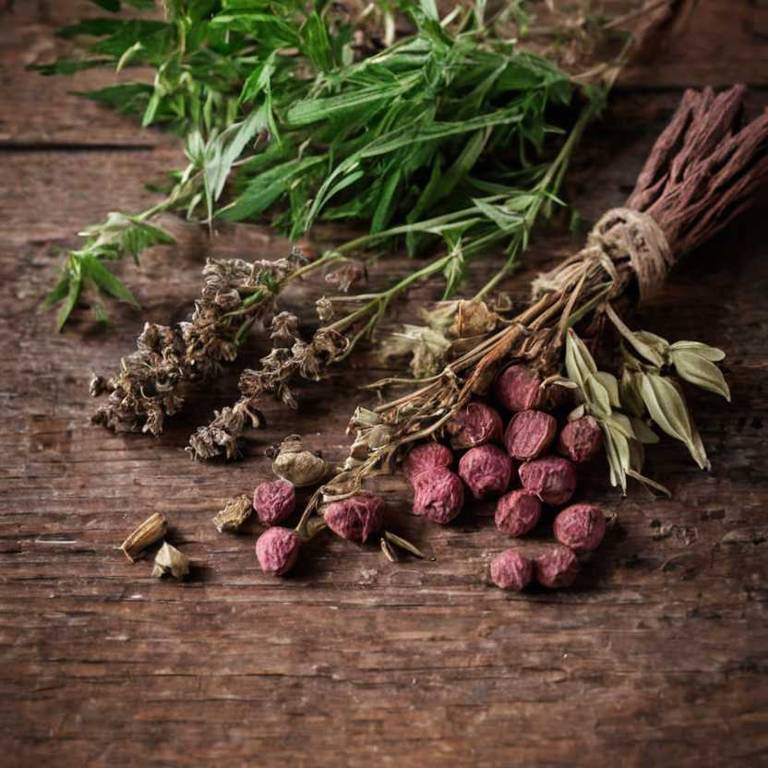By Leen Randell
Updated: Jul 06, 2024
What to know about Prunus cerasifera (plum) before using it medicinally

Prunus cerasifera, commonly known as plum, is a herb that has been prized for its numerous health benefits and horticultural uses for centuries.
Its extracts have been shown to have antioxidant and anti-inflammatory properties, improving cardiovascular health and reducing the risk of chronic diseases. As a horticultural gem, Prunus cerasifera is a versatile shrub or small tree that thrives in a variety of environments and can be cultivated for its ornamental value, edible fruit, or medicinal properties.
With a rich history dating back to ancient Greece and Rome, where it was used to treat a range of ailments, Prunus cerasifera remains a valuable and revered herb in modern times.
This article explains the medicinal, horticultural, botanical, and historical aspects of Prunus cerasifera.
What are the medicinal properties of Prunus cerasifera?
Prunus cerasifera helps with digestive issues, such as constipation and diarrhea, due to its anti-inflammatory properties. It also exhibits antioxidant, antimicrobial, and antiviral activities. Traditionally, it's used to treat various health issues.
The active constituents responsible for its medicinal properties are flavonoids, phenolic acids, and terpenoids. These compounds have been shown to possess anti-inflammatory, antioxidant, and antimicrobial activities, contributing to its health benefits.
The parts of the plant most used for medicinal purposes are the fruit, bark, and leaves. The fruit is rich in vitamins and minerals, while the bark and leaves contain flavonoids and phenolic acids, which contribute to its medicinal properties.
When used improperly, Prunus cerasifera can cause gastrointestinal side effects, such as nausea, vomiting, and diarrhea. Its seeds and leaves may also be toxic due to the presence of amygdalin, which can release cyanide when ingested.
Precautions when using Prunus cerasifera medicinally include proper identification of the plant, as it resembles other species with toxic properties. It's also essential to use the plant in moderation and in combination with other herbs to minimize side effects and ensure its effectiveness.
What are the horticulural aspects of Prunus cerasifera?
Prunus cerasifera grow in USDA zones 4-8, preferring full sun to partial shade and well-drained soil with a pH between 6.0-7.0. They can tolerate drought but benefit from regular watering.
Plant Prunus cerasifera in early spring or fall, spacing trees 15-20 feet apart. Dig a hole twice as wide and as deep as the root ball, mixing in organic matter like compost or manure. Water thoroughly and mulch around the base to retain moisture.
Harvest plums in late summer to early fall, when the fruit is fully ripe and the skin is slightly soft to the touch. Check for sweetness and flavor by tasting a few fruit. Pick at the right time to avoid spoilage and preserve flavor.
Prunus cerasifera is susceptible to pests like plum curculio, Japanese beetles, and aphids. Diseases like powdery mildew, black knot, and root rot are common issues, caused by fungi and bacterial pathogens that thrive in moist environments.
What are the botanical aspects of Prunus cerasifera?
Prunus cerasifera is a deciduous shrub or small tree with a broad, rounded crown, typically growing 3-6 meters tall, with a smooth grey bark that becomes fissured with age.
Prunus cerasifera belongs to the Rosaceae family and is classified in the genus Prunus, section Prunus, section Prunophora, and the subgenus Prunus. Its botanical classification is as follows: Kingdom: Plantae, Phylum: Angiospermophyta, Class: Magnoliopsida, Order: Rosales.
Several variants of Prunus cerasifera exist, including 'Nigra', a dark-leaved cultivar, and 'Nana', a dwarf cultivar, which are widely cultivated for their ornamental value. 'Plena' is a double-flowered cultivar, while 'Pissardii' is a weeping cultivar.
Prunus cerasifera is native to the Middle East and Mediterranean regions, but has been naturalized in many other parts of the world, including North America, Europe, and Asia. It is commonly found in forests, woodlands, and along roadsides.
The life cycle of Prunus cerasifera typically involves 3-6 years of growth from seed to maturity, followed by 2-4 years of production of small, purple flowers. The fruit, a drupe, ripens in late summer and is consumed by various birds and small mammals.
What are the historical aspects of Prunus cerasifera?
Prunus cerasifera is a species of deciduous tree that has been used for various purposes throughout history. The wood of the plum tree was used for making furniture, and the fruit was consumed fresh or used for making jam, preserves, and wine. In some cultures, the bark was used to create dyes.
In mythological references, the plum tree is associated with the Greek myth of Demeter, the goddess of agriculture, who was said to have planted the first plum tree. The plum tree is also mentioned in ancient Chinese texts as a symbol of good fortune and prosperity. The plum blossom is the national flower of Japan.
The symbolic meanings of the plum tree vary across cultures. In Christianity, the plum blossom is a symbol of new life and renewal. In some Asian cultures, the plum tree is a symbol of longevity and good health. In other cultures, the plum tree is associated with love and fertility.
The plum tree is mentioned in several historical texts, including the writings of ancient Greek and Roman authors, such as Theophrastus and Pliny the Elder. The plum tree is also mentioned in the works of Chinese poets and scholars, such as Du Fu and Li Shangyin.
Archaeological evidence suggests that the plum tree was cultivated in ancient civilizations, including those in Mesopotamia and the Indus Valley. The plum tree has also been found in the artifacts of ancient China, including in the tombs of the Ming and Qing dynasties.